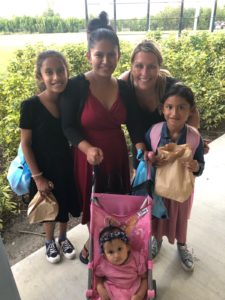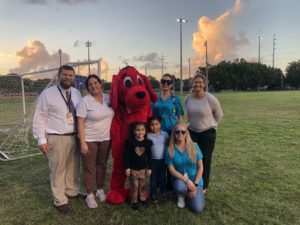Haiti. Uzbekistan. Nicaragua. Sweden. Cuba. Zimbabwe. Brazil. Afghanistan. No, this is not the start of a listing of United Nations members. These are just a few of the countries that are represented in the Monroe County School District (MCSD). The total number of countries that are represented in the school system? 91.
Take a moment to let that sink in: The students in Florida Keys schools come from 91 different countries.

Natallie Liz is the district’s District ESOL coordinator. ESOL stands for “English Speakers of Other Languages.”
“We’ve had an increase in enrollment for students born outside of the U.S. in the last few years,” Liz told Keys Weekly. She pointed out that after the recent earthquake in Haiti, more students have come from there. And 34 students are from Uzbekistan.
“There’s an understanding they may be fleeing for political reasons, and there’s a confidentiality agreement,” said Liz. “We don’t ask, and we welcome them. We do our best to align them with strategies that they can use beyond their career with us.”
The staff members in the school district make it a policy to welcome students from wherever they are from and be prepared to educate them, whether they speak Portuguese or Dari, which is a dialect of Persian used in Afghanistan.
According to Amber Archer Acevedo, coordinator of community relations for MCSD, “We have 896 active English Language (EL) students, classified as English learners, with 29 different languages. This is approximately 10 percent of the 8,900 students we have in the district.”

If a student cannot speak English, staff members have a system to figure out the best way to educate them. During registration, all new students get a home language survey and their families indicate that another language than English is spoken at home. From there, the student is partnered with an ESOL support staff member and sent to the most appropriate setting, which can be a sheltered instruction class with students who do not have any English proficiency or an integrated classroom with native English speakers.
“We get in educational materials in a wide variety of languages,” said Acedevo, who noted that the ESOL program is completely funded by the U.S. and Florida’s departments of education. Very often, translation apps on electronic devices are used.
Superintendent Theresa Axford states, “We are proud of our teachers and staff who work very hard to provide instruction to students who are English learners. In many cases, students come to us with no English speaking ability and Monroe County School District teachers use multiple resources and much planning for instruction to help them succeed. It is remarkable to watch how this process works and how successful students become in their capable hands.”























